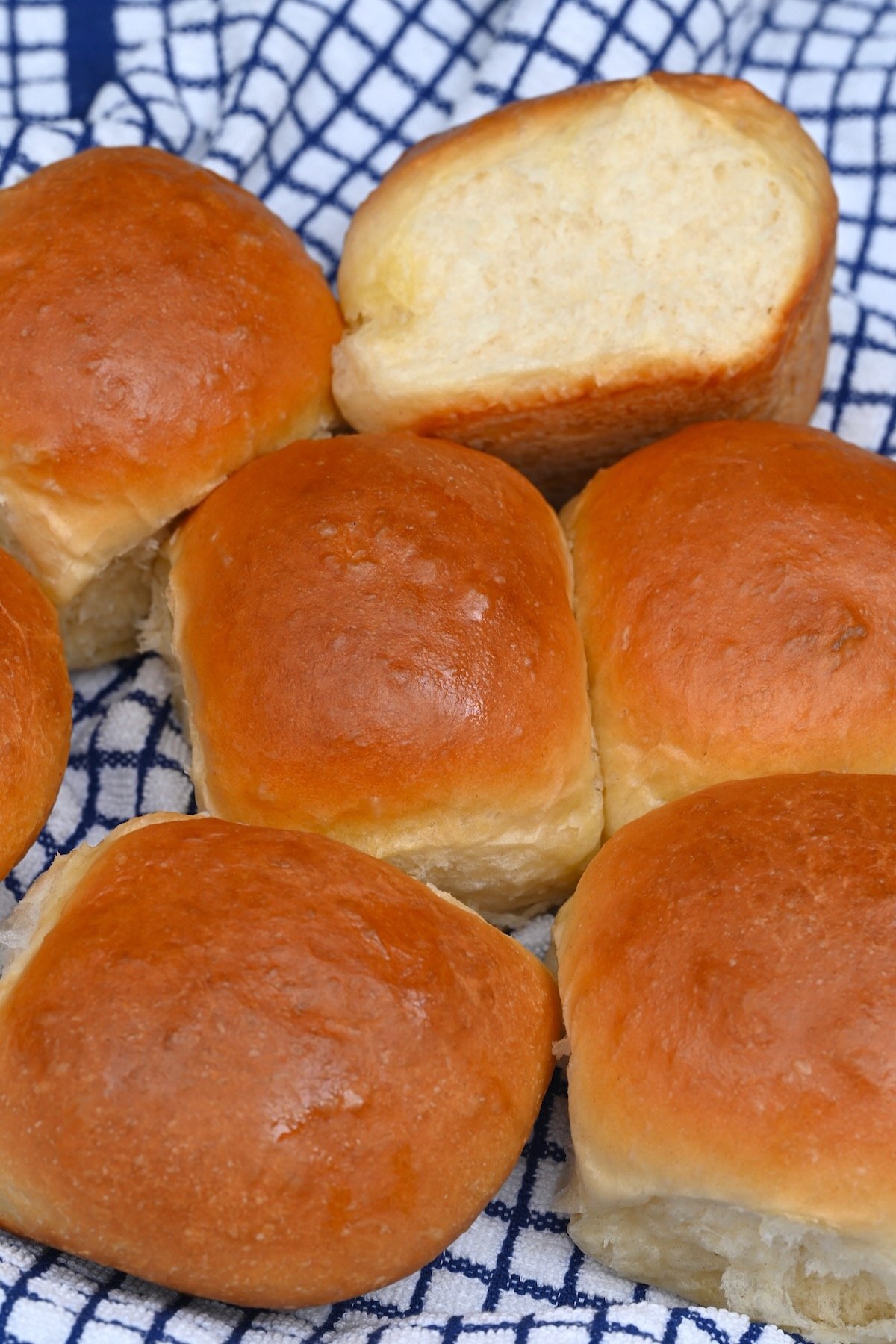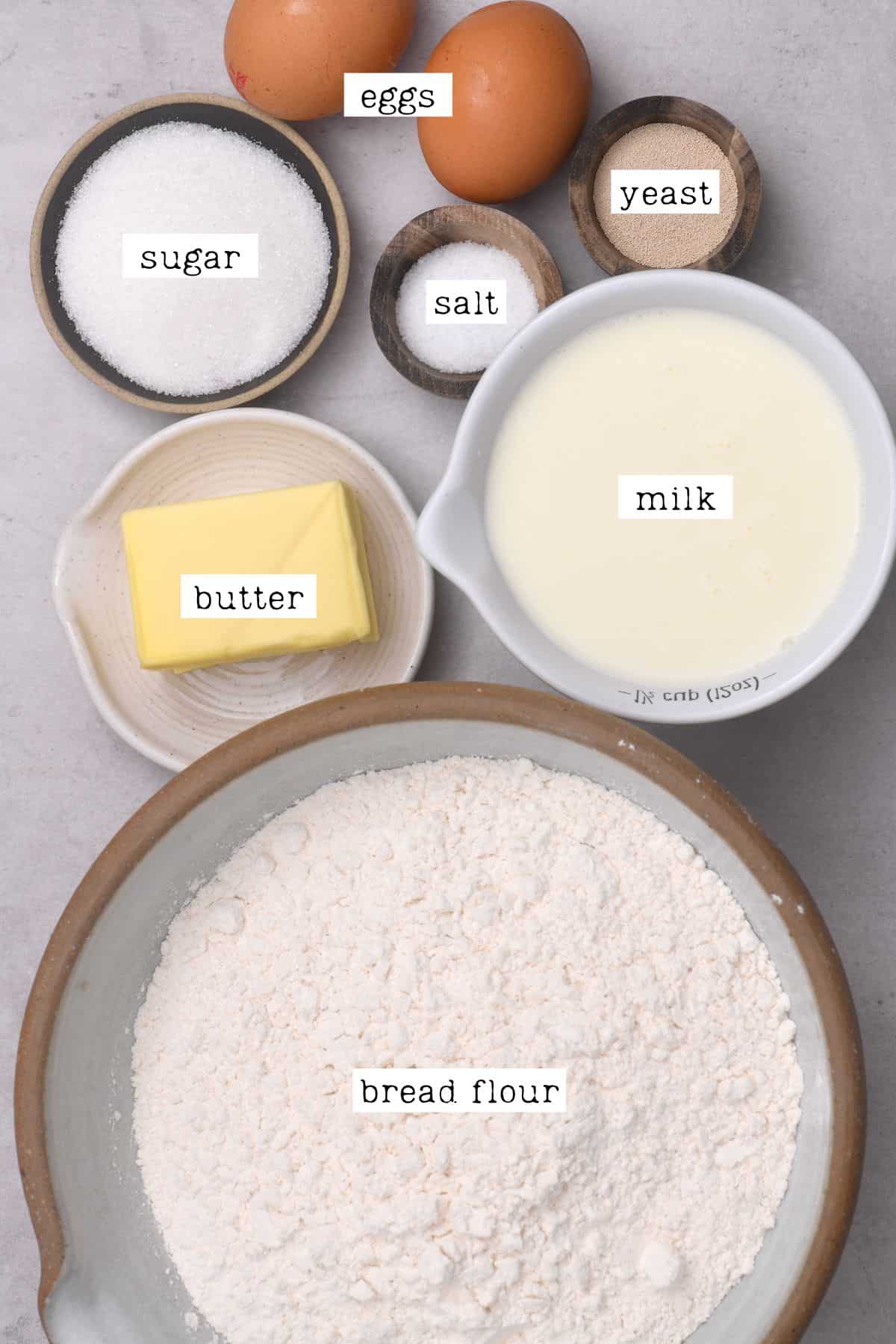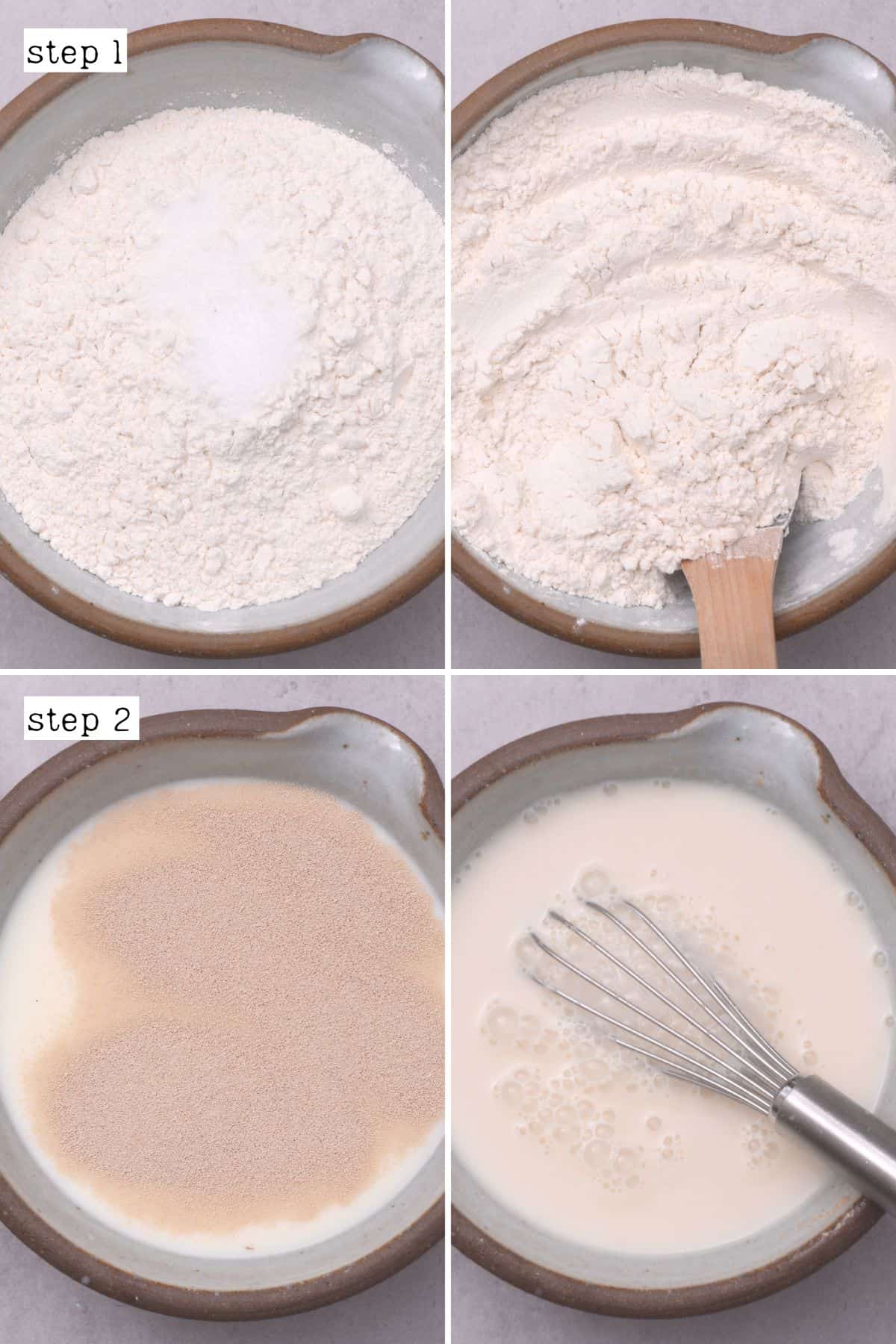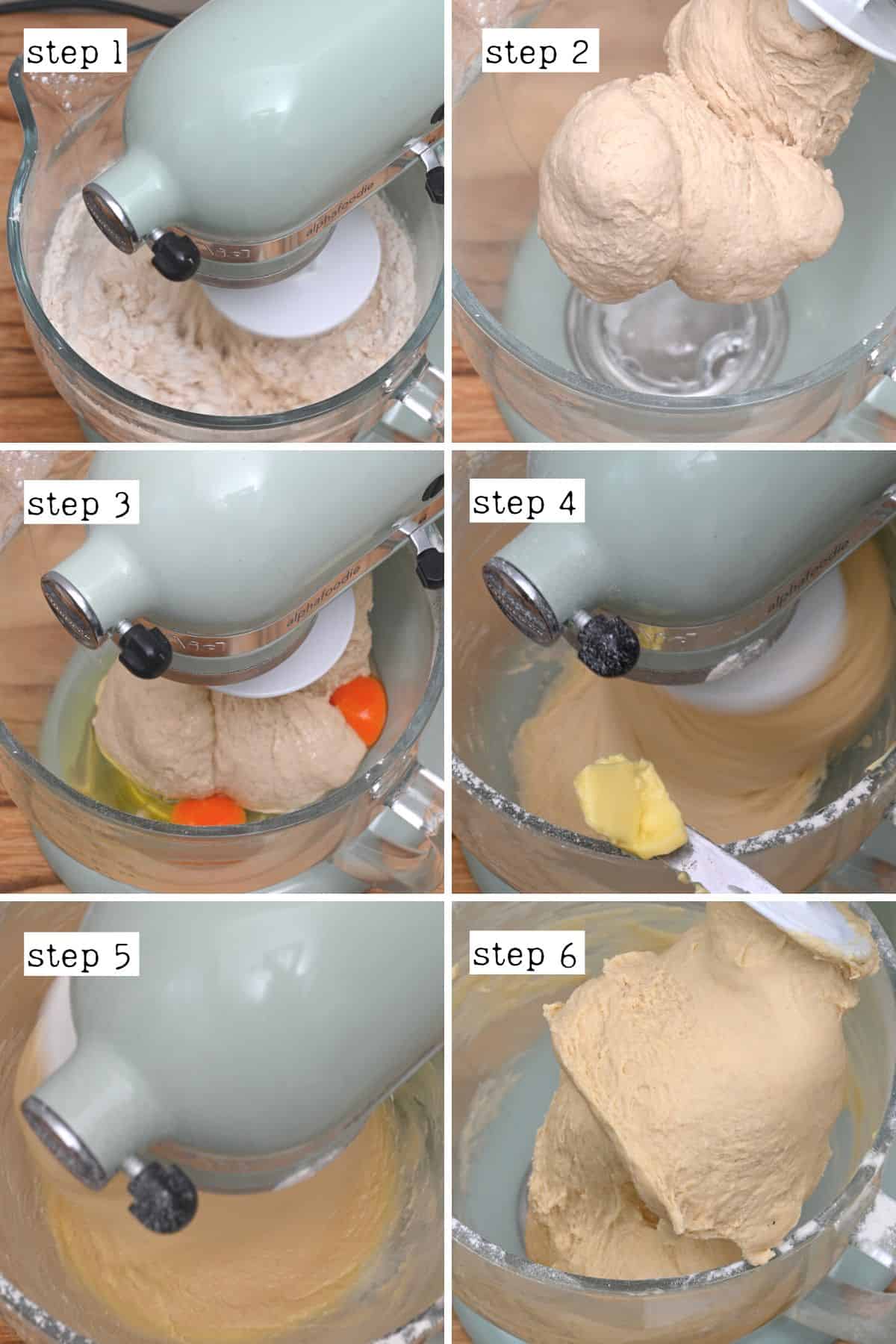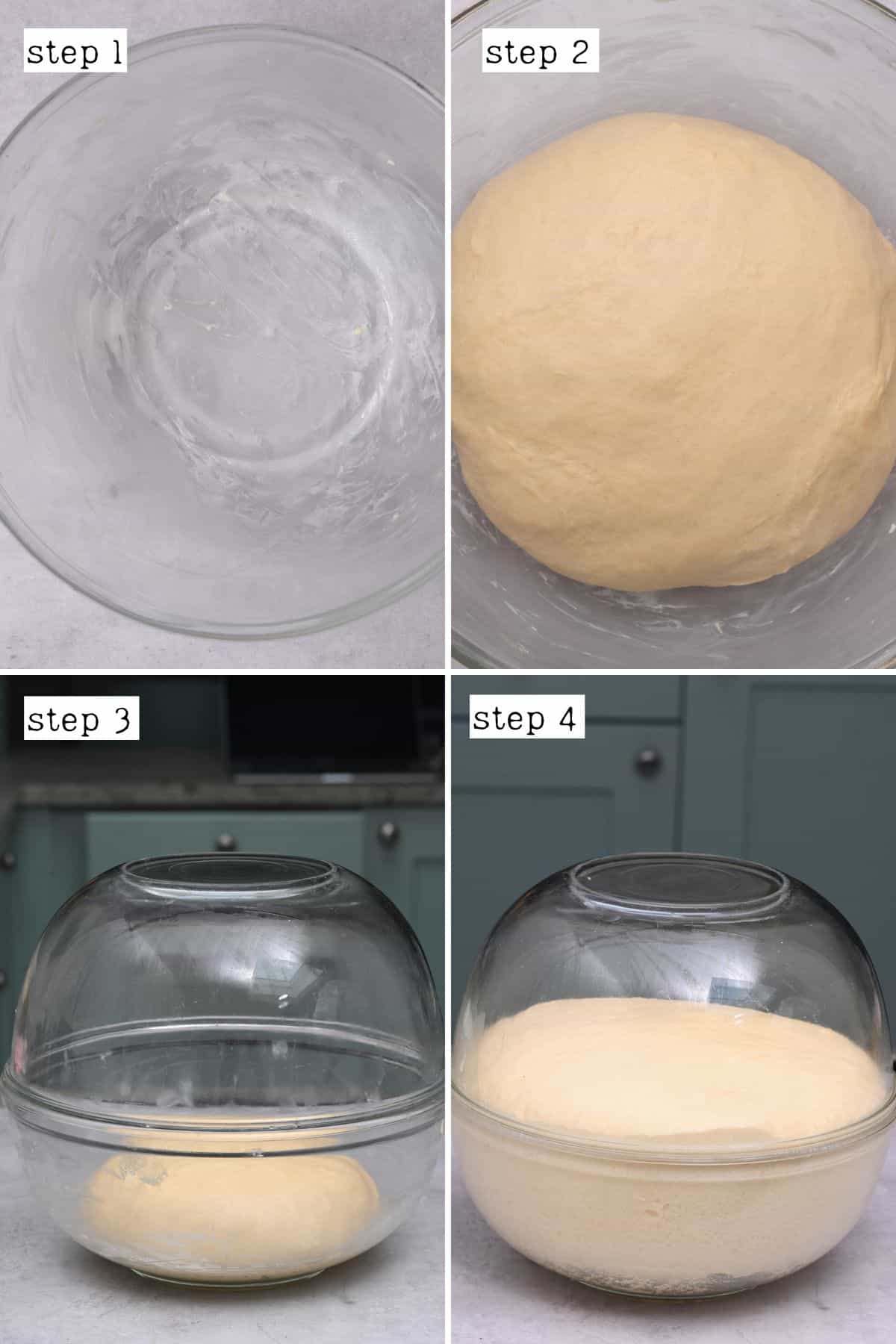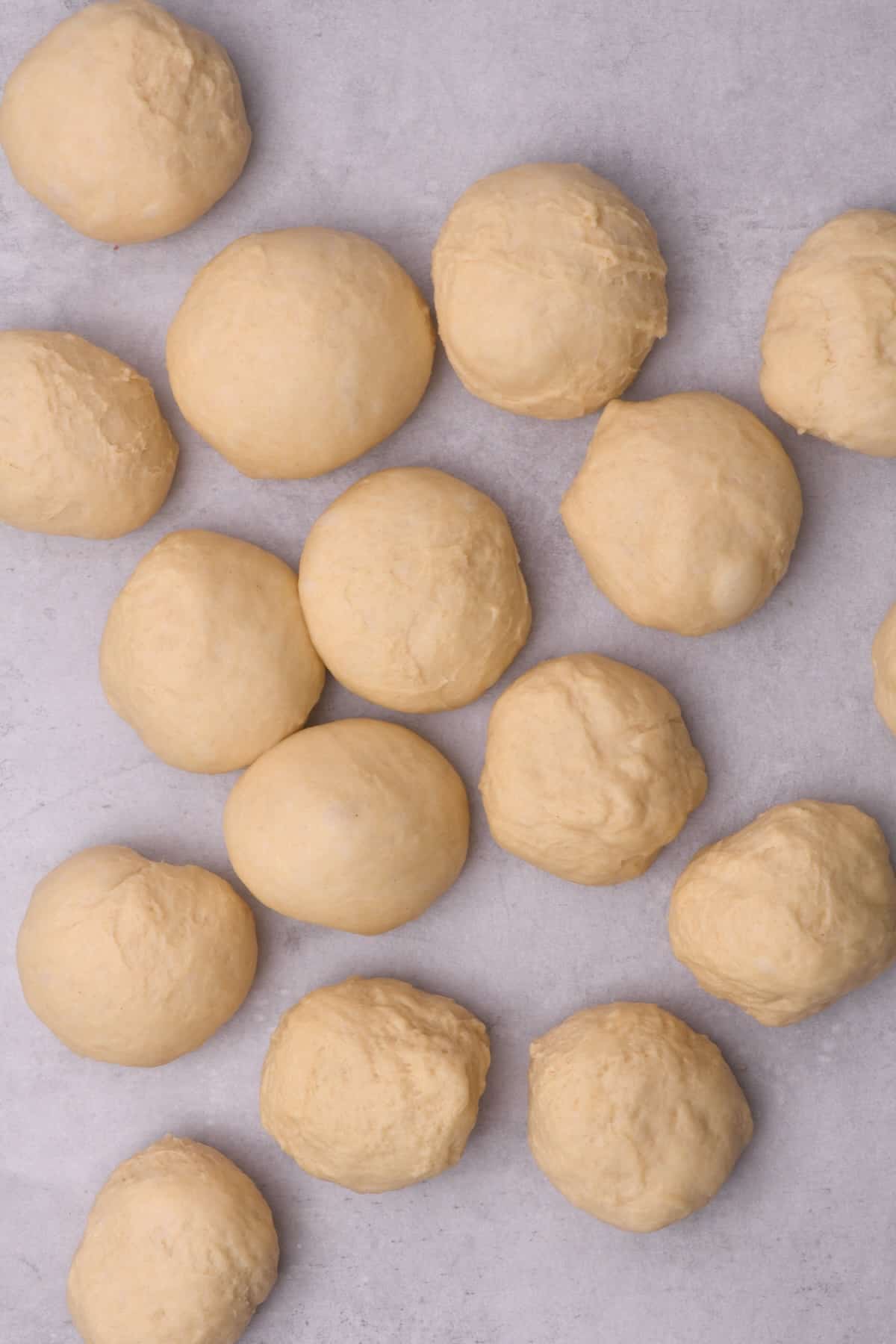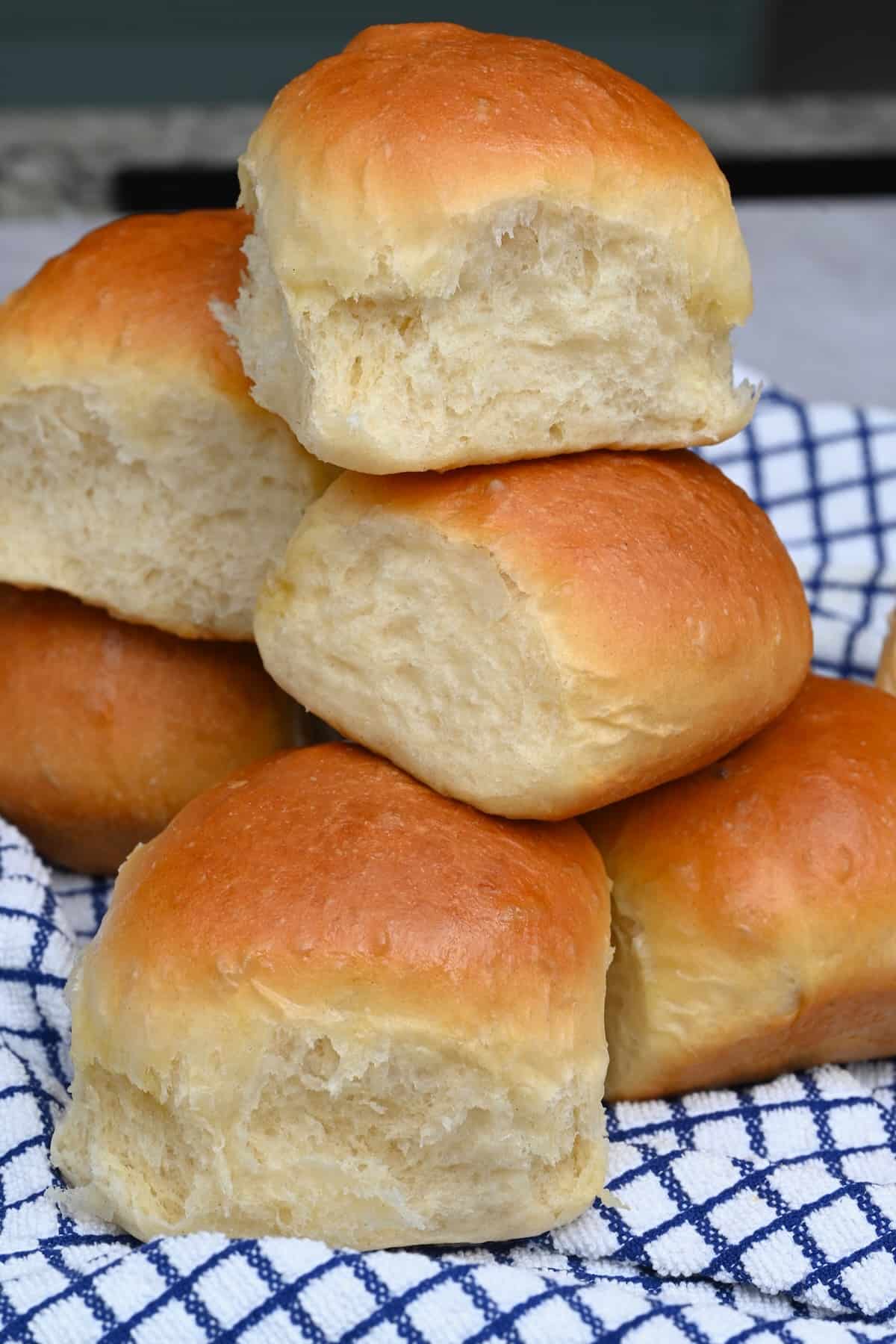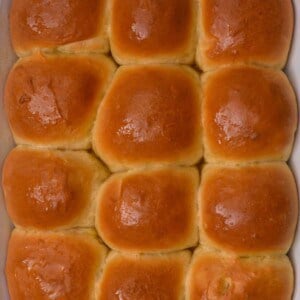Thanksgiving and Christmas just around the corner. So it’s the perfect time to make a batch of these fluffy, pillowy, tender, butter, delicious, soft dinner rolls. They are perfect for enjoying fresh and warm from the oven!
Flour: White bread flour is best for the lightest and fluffiest rolls. General all-purpose flour or a 50/50 all-purpose and whole wheat flour blend will also work (for slightly denser, chewier results). Salt: I recommend using sea salt/kosher salt for the best flavor. Eggs: It’s best to use room-temperature eggs. These provide structure to the bread. Butter: Use room temperature butter. Unsalted is best, but if you must use salted, then decrease/remove the added salt from the ingredients. This fat helps to create the enriched dough that makes for super soft and rich dinner rolls. Milk: Whole milk (full-fat milk) is best for the softest rolls. It should be lukewarm at around 100-110ºF/38-43ºC (to help activate the yeast). Buttermilk would also work. Dry yeast: Use either active dry yeast or instant yeast. It’s important to note that the rising time may be less with the Instant version. Sugar: To help feed the yeast in this bread roll recipe. Any sugar will work, including unrefined granulated sugar like coconut sugar, maple syrup, or honey.
Garlic, herbs, and cheese dinner rolls. Combine 1 teaspoon garlic powder with 2 Tbsp of dried herbs, like basil, rosemary, oregano, parsley, or even Italian seasoning. Also, optionally add shredded hard cheese. Rosemary dinner rolls: Add 1-2 Tbsp dried rosemary to the flour and salt mixture. Simple but so aromatic. Chili flakes: To add heat to these easy dinner rolls – best with other herbs. Sun-dried tomatoes & olives: Finely chopped. This also pairs well with the cheese option. Cheese dinner rolls: Add between 1/2-3/4 cup of shredded hard cheese, like cheddar cheese.
Prepare The Yeast Roll Dough
First, mix the salt and flour in a large mixing bowl. Then, in a separate bowl, combine the warm milk, yeast, and sugar. Stir well and set aside for about 5 minutes for the yeast to activate (become foamy/bubbly). Then, add the eggs and mix before adding the butter incrementally, mixing all the while. If mixing the dough by hand, it’s best to whisk the eggs in advance. Though it isn’t 100% necessary if using a stand mixer. It should be pliable, bounce back when prodded, and feel slightly tacky but not sticky. If it’s sticking to your hands or the sides of the bowl, add in more flour. Just one teaspoon at a time – too much flour will make dense rolls. Transfer the bowl to a warm, draft-free area to leave the dough to prove for between 1-2 hours until it doubles in size. My dough weighed about 48oz (1.36kg), so I divided it into 16 large rolls of 3oz/80g each. For 24 rolls, 2oz/60g would work. If you want very small, “mini” rolls (more like dough ball size), use about 1.4oz/40g. Keep in mind that the smaller the rolls, the faster they will bake. When making the dough balls, pinch and seal the bottom, ensuring they have a smooth top. Cover the dish with a clean kitchen towel and set it aside in a warm area for a further 40-60 minutes to rise again. I used a 9×13 baking dish. However, you could also use other shapes (like a round baking dish). Or shape them into various bread rolls shapes, like a heart, Christmas tree, or wreath (perfect for placing baked Camembert or dips in the middle). Or twist them into knots, etc.
How Long to Bake Dinner Rolls
When ready, bake the dinner rolls on the lower rack of the oven for 20-25 minutes (or slightly less for mini dough balls) until golden brown. Rotate the pan halfway. If they’re browning too fast, tent the rolls with aluminum foil while baking. Once ready, remove the rolls from the oven. Optionally brush them with a little melted butter for shine. Then leave them to cool a bit (until warm, not hot). And this is all you need to know for how to make yeast rolls. The raw dough: Rather than leaving the dough to prove in a warm location (for the first or second rise), you can cover it with plastic wrap. Then transfer it to the fridge to prove overnight, up to 48 hours in advance. When you want to continue, place it on the counter. Wait until it comes to room temperature and doubles in size (between 1-3 hours), then continue with the recipe. Warm in the microwave in 15-second increments (though they’ll be softer). Slice in half and toast. Or place back in the oven at 200ºC/400ºF until warmed through (around 10 minutes). If you’re planning to serve them as an appetizer/party food option, I recommend accounting for 2 dough balls per guest.






